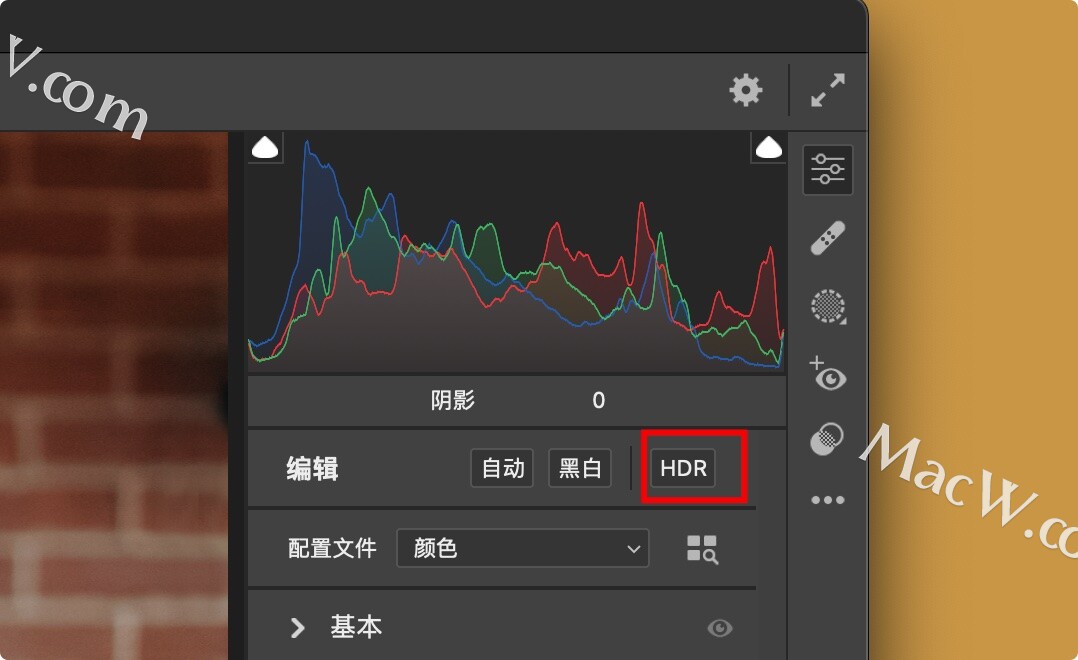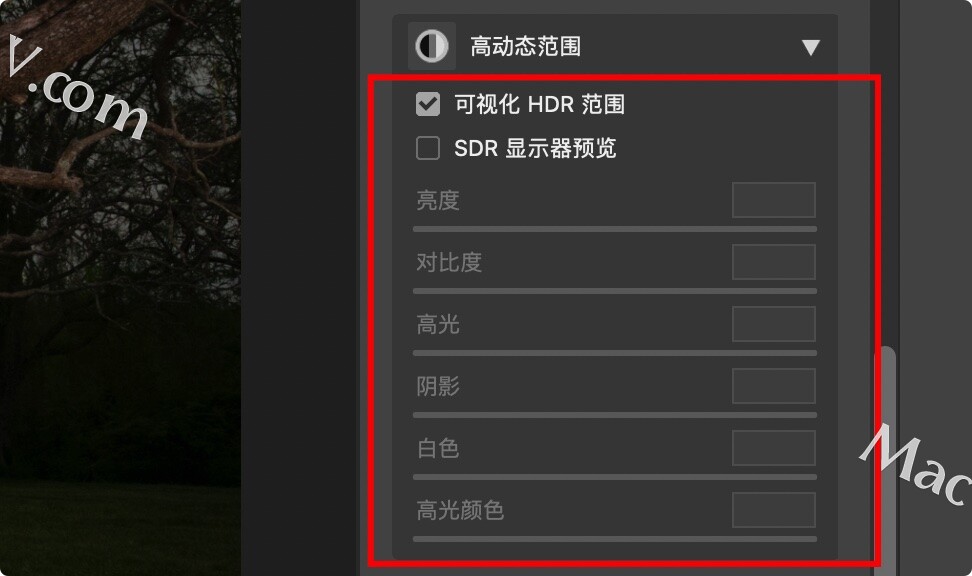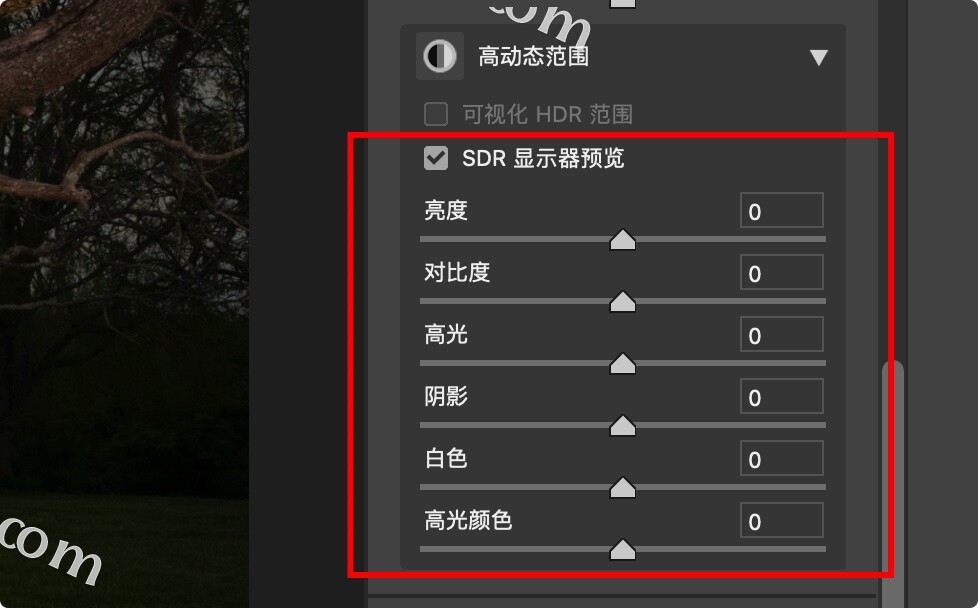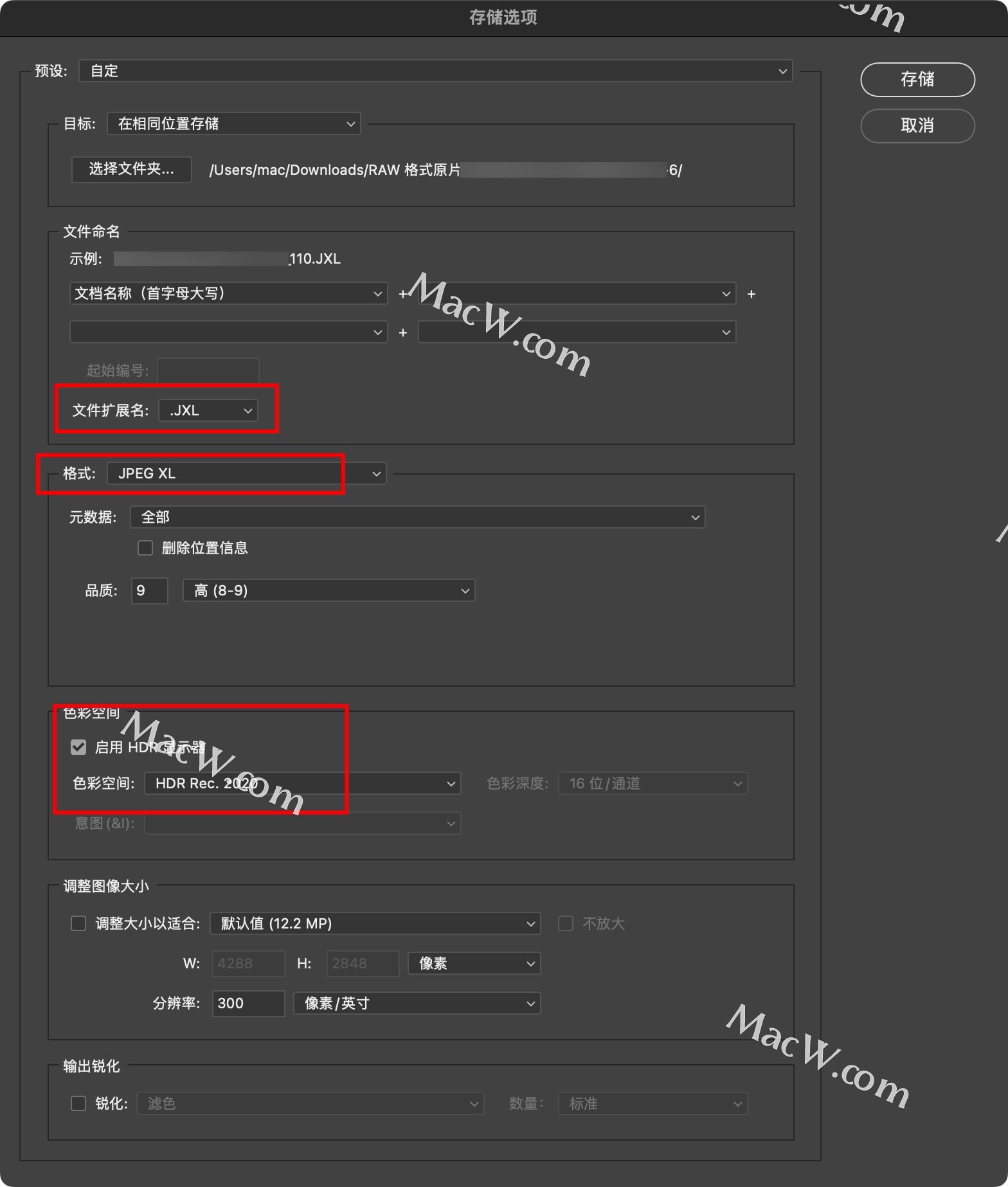The latest Camera Raw 15.1 has been updated, and the main function update is: full support for HDR display and export, and support for a wider dynamic range of photos. Camera Raw is referred to as ACR for short. After reading this ACR 15.1 new function HDR detailed explanation, you will understand it better.
Mac version download: Camera Raw 15.1
What is updated in ACR 15.115.1?
The main function update is: full support for HDR display and export, and support for a wider dynamic range of photos.
Its most important significance lies in: below the ACR 15.1 photo level, the "HDR button" is placed; and in the basic panel, the HDR "high dynamic range" editing area is set, allowing us to edit the display that supports HDR. dedicated editor. It can be said that this is a new function that keeps pace with the times. ACR 15.1 is a new version for HDR high dynamic range.

How can I show the "HDR" button?
After installing the latest version of ACR15.1, you will not be able to see the HDR button below the histogram immediately. You need to follow the steps below: 1. Click the gear in the upper right corner of ACR15.1 to enter the "Camera Raw Preferences" interface. Click "Technology Preview", tick "HDR Output", and click OK.

2. The next step is very important: After setting the above preferences, close ACR 15.1, exit PS2023 (please confirm the exit), then reopen PS2023, and then open a photo in RAW format, the system will automatically pop up ACR15.1, on the ACR15.1 interface at this time, you can see the HDR button displayed.

Can non-HDR photo formats like JPG or tiff activate the HDR button?
Yes. OK. According to the above steps, after activating the display HDR button, ACR15.1 can also display the HDR button even if it is not a photo taken by HDR, but a normal RAW format (including DNG format taken by a drone), or even a JPG format photo. In the basic panel, the "High Dynamic Range" editing area can also be displayed similarly.
What is the use of the updated HDR of ACR 15.1?
The brightness and contrast of a high dynamic range (HDR) display is superior to that of a standard dynamic range (SDR) display.
Therefore, with the updated HDR display function of ACR15.1, photos optimized for HDR displays have brighter highlights and more detailed shadows, which can improve realism and enhance visual effects. In previous versions of ACR, even if your monitor supports HDR, the rendered result was always limited to SDR. For example, final 8-bit pixel values are always limited to 0 to 255, while on-screen results are limited to the standard brightness range for the user interface.
The latest version of ACR 15.1, introduces high dynamic range output. This way, you can: ✔ View and edit HDR photos on compatible HDR monitors. ✔ Save HDR photos to disk and open HDR photos in Photoshop.
My monitor doesn't support HDR, is it necessary to upgrade? Is necessary. Although your monitor does not support HDR display, the latest version of ACR15.1 is still placed in the SDR editing area for fine adjustment. In addition, ACR15.1 has also carried out bug fixes this time, making the operation more stable and smooth. Therefore, an upgrade is recommended.
What does the updated HDR of ACR 15.1 look like?
The HDR function after the latest version ACR15.1 is updated, as shown in the figure below: 1. The latest version ACR15.1 adds a "HDR button" below the photo histogram:

2. Click to activate the "HDR button", the histogram becomes two parts, the left is SDR, and the right is HDR.

SDR (Standard Dynamic Range) standard dynamic range refers to a common color display method. Compared with HDR, the information size is smaller and more popular.
Correspondingly, HDR (High Dynamic Range Imaging) high dynamic range, in computer graphics and cinematography, is a technology used to achieve a larger exposure dynamic range (that is, a greater difference between light and shade) than ordinary digital image technology .
3. In addition to the HDR button, in the basic panel, a special "high dynamic range" editing area is added:

4. Click the triangle symbol on the right side of "High Dynamic Range" to expand the editing area. There are two options "Visualize HDR range" and "SDR monitor preview" respectively.
If your monitor supports HDR display, after checking "Visualize HDR Range", the editing area below will be displayed in a bright color state that can be edited.
And if your monitor does not support HDR display, after checking the "Visualize HDR range", the editing area below will be displayed in a gray state that cannot be edited;

At this point, it is necessary to check "SDR display preview", and the editing area below will be displayed in a bright color state that can be edited:

How to read the histogram in "HDR" mode?
In the latest version of ACR15.1, click the HDR button below the histogram to activate the HDR mode, and the histogram will change significantly.
When editing a photo in HDR mode, the histogram is split into two parts: the SDR part on the left and the HDR part on the right. A vertical gray line between the two sections, representing the standard graphic white scale, the white of the user interface. If the histogram extends to the right of this divider, the photo contains HDR content and requires an HDR monitor to display correctly.

The color horizontal bar below the HDR section, when displayed in yellow, indicates the HDR range that the display can currently display. When the horizontal bar is red, it indicates that the display is beyond the current capability of the range.

Right-click on the HDR area, check "Visualize HDR range" (default is unchecked), the color horizontal bar below HDR will be presented as 4 different colors from left to right, representing the different colors on the SDR white. The color scale value of . The larger the value of the color scale, the more pixels are beyond the capacity of the current display. This knowledge point is more complicated, you can leave it alone and keep the "Visualize HDR range" unchecked by default.

What happened to the color space and bit depth after activating the "HDR" button?
In the latest version of ACR15.1, after clicking the HDR button below the histogram to activate the HDR mode, the color space and bit depth of ACR have also changed. When editing, opening or saving photos in HDR mode, ACR 15.1 currently supports three color spaces: HDR sRGB (Rec. 709), HDR P3 and HDR Rec. 2020, these are the existing sRGB, Display P3 and Rec.2020 colors The HDR-enabled version of the space. sRGB has the smallest color gamut, while Rec.2020 has the largest.
1. If your previous color space is sRGB, the color depth is 16 bits. After activating the HDR mode, the color space directly below the ACR15.1 interface will automatically display as HDR sRGB with a color depth of 32 bits:
What happens to the exported photo format after activating the "HDR" mode?
After installing the latest version of ACR15.1, there is a very important change: when exporting, two new formats --- JPEG XL format and AVIF format have been added. If you choose to export the JPEG XL format, the corresponding file extension is .JXL.

The JPEG XL format is a new image format launched by the Joint Photographic Experts Group (JPEG) in 2021. Compared with the familiar JPEG format, the JPEG XL format adopts a higher lossless compression ratio (approximately from 20:1 to 50:1), and the file capacity and footprint are smaller, but it includes wide color gamut and high dynamic range image format , it also supports animation, transparent or semi-transparent display, and content including layers, thumbnails, etc. It also supports 360-degree image content and progressive web page usage requirements.
The AVIF format is a network image format based on the AV1 codec, which was first announced by Netflix on February 14, 2020. This format is very flexible as it supports any image codec, supports both lossy and lossless encoding, is able to use an alpha channel, and can even store a sequence of animation frames, just like a high-quality animated gif. It was also one of the first image formats to support HDR color, offering increased brightness, color bit depth, and color gamut.
It's a bit of a mouthful and esoteric, but you just need to understand one thing: the above two image formats are better than JPEG, but they haven't been widely used yet, and because they are too new, the support for various applications and platforms is limited. Therefore, to participate in photography competitions and share works on the Internet, you only need to export the regular JPEG format.
The above is enough to read this article. The latest Camera Raw 15.1 new function HDR detailed explanation is all the content. If you need it, download it quickly.